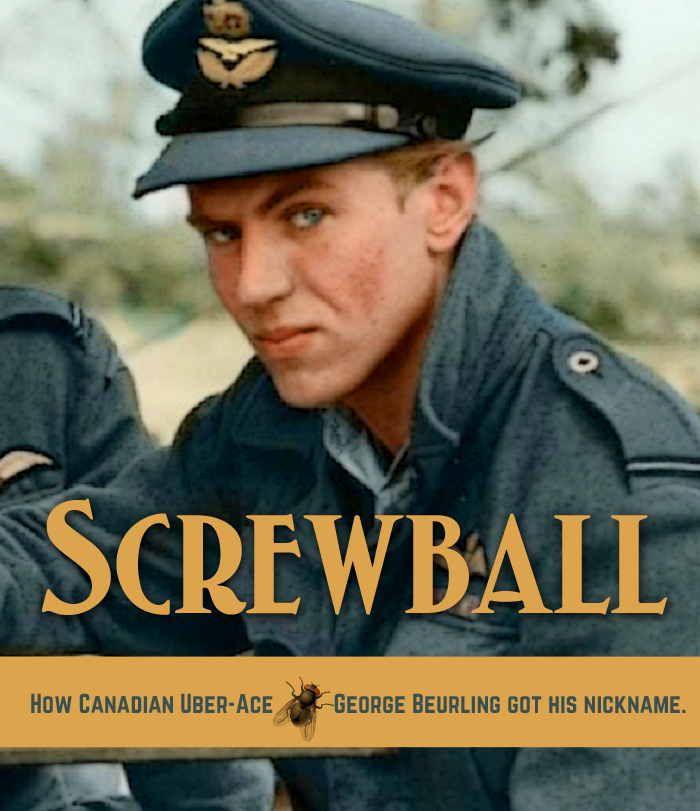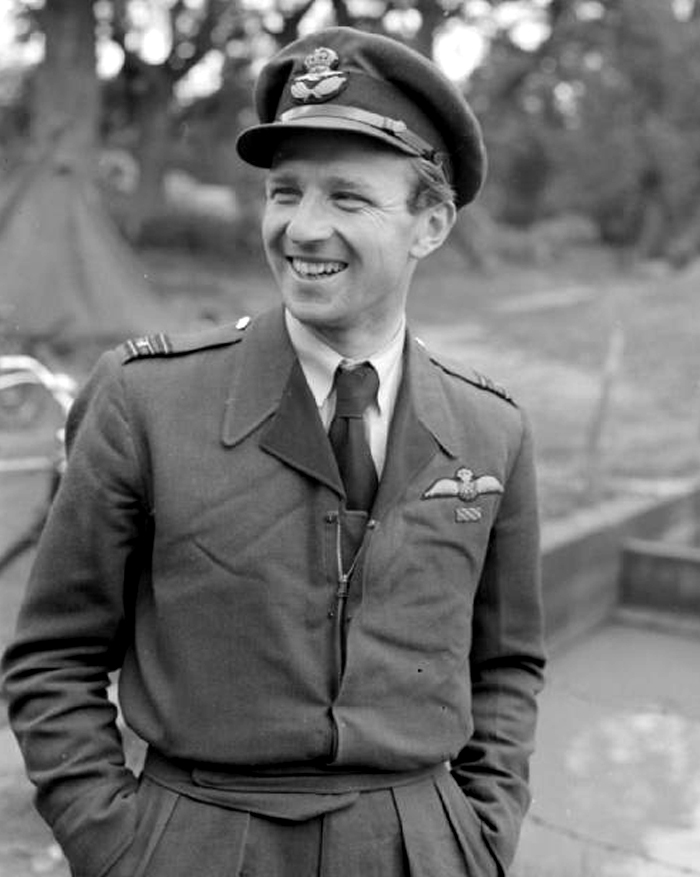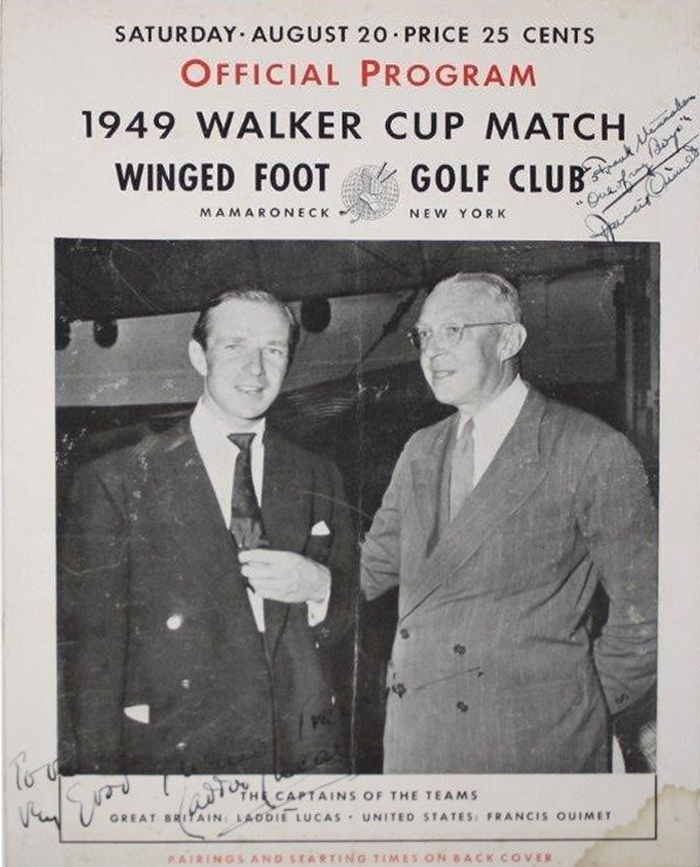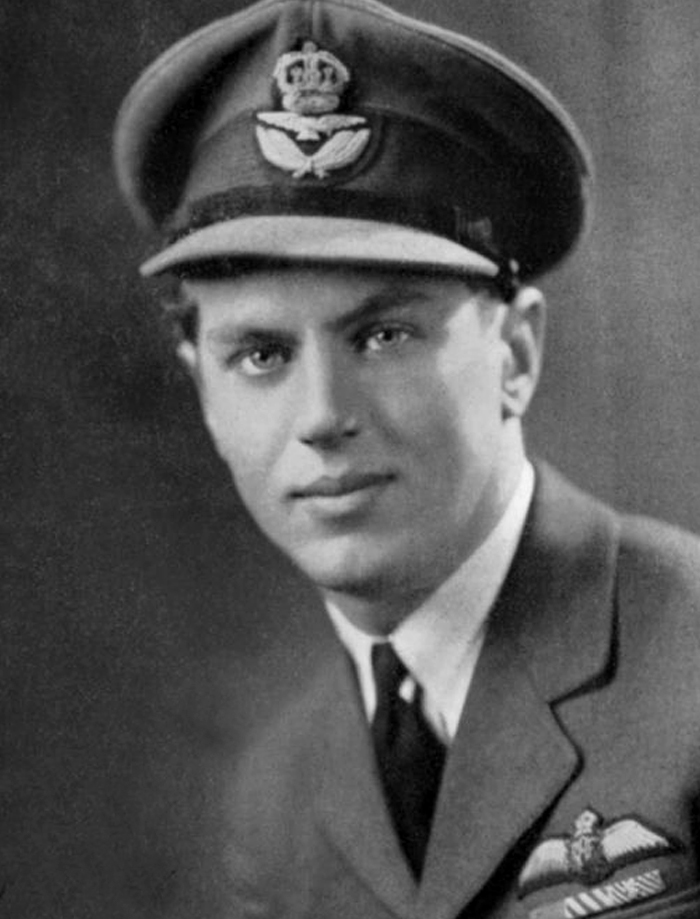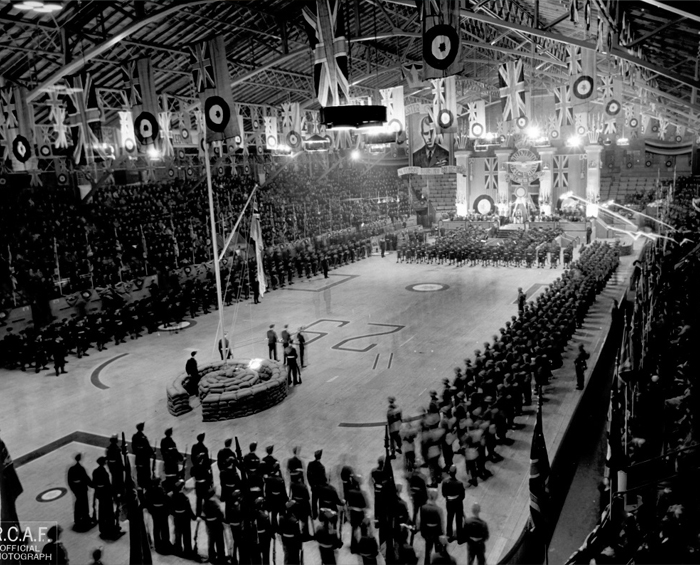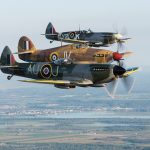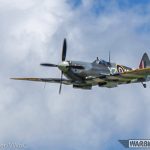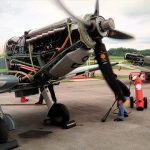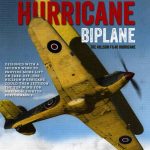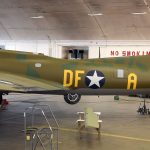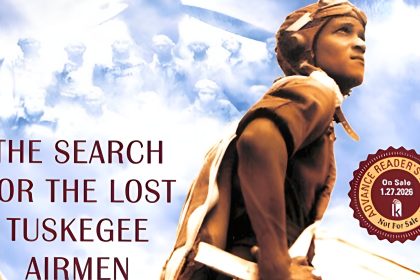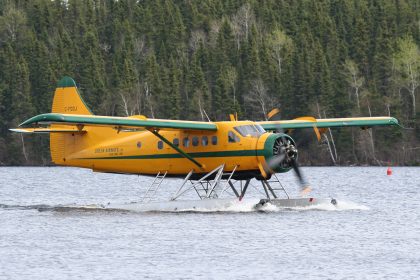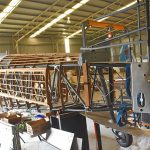By Dave O’Malley of Vintage Wings of Canada
On the island of Malta in the endless, hot and dusty summer of 1942, fighter pilots from the British Commonwealth fought and died to prevent the Nazis from bombing the Maltese into submission and to break a crippling siege blockade. After the Battle of Britain, there was no greater battle of the Second World War in which air combat and superiority played the central role. Here in the brilliant, searing sky over Malta, reputations were made, lives were forfeited, stresses were multitude and legends were born.
Canadian fighter pilots played a crucial and out sized role in the defense of an island that hovered on the brink of collapse for two and a half years. Of the many great aces that wrote their stories here, many were Canadian and none more storied than Flight Sergeant George Frederick Beurling.
Of all the Canadians who engaged in the grim business of killing German airmen, Beurling is the most accomplished of all. There would be no one better at war’s end. Beurling was then, and is today, a figure that inspires conflicting impressions, opinions and feelings—both suspicion and adoration. In his eyes you can see, no feel, the spirit of the lone wolf, the practiced killer, the gifted predator. Both charismatic and controversial, introspective yet outlandish, he was a man who would not follow the normal arc of history. On Malta Beurling would become the greatest Canadian ace of the war, and the subject of legend, hero worship, bureaucratic manipulation and conspiracy theory.
With his preternatural abilities in the air, his odd and aloof behaviour and his unquestionable successes, Beurling attracted nicknames like flies on a biscuit. Today we commonly call him Buzz Beurling, but back in the day, Allied propagandists took to calling him The Knight of Malta or The Falcon of Malta, but his 249 Royal Air Force squadron mates knew him as Screwball. The Merriam-Webster dictionary defines the word ‘screwball’ as “a whimsical, eccentric, or crazy person”. Considering his sometimes-quirky and insular behaviour, his icy blue eyes, withering glances, and distain for bureaucratic niceties, one might be forgiven for thinking that the name Screwball was earned as a result of his character. I know I did. But that would be wrong. Recently I was reading a yellowed page torn from the Toronto Globe and Mail of September 6, 1949. There was a short interview by columnist and aviation enthusiast Bruce West with another Malta icon, Wing Commander Percy Belgrave Laddie Lucas, CBE, DSO and Bar, and DFC Beurling’s 249 Squadron commanding officer during his time on Malta.
Laddie Lucas was one of the most loved, elegant and respected commanders in the Royal Air Force during the war years. Prior to the onset of hostilities, Laddie Lucas was a sports writer for Lord Beaverbrook’s Sunday Express and a very gifted golfer. In 1935, he was considered, at the age of 19, to be the best amateur left-handed golfer in the world.
Lucas was in Toronto on September of 1949 on his way home from New York’s Winged Foot Golf Club where he led the British and Irish team in the 13th Walker Cup Match. The Walker Cup is a golf trophy contested in odd-numbered years by leading amateur golfers in two teams: United States, and Great Britain and Ireland. The cup is named after George Herbert Walker who was president of the USGA in 1920 when the match was initiated. Walker is the grandfather and namesake of George H. W. Bush and great-grandfather of George W. Bush, the 41st and 43rd Presidents of the United States, respectively.
In the interview, Lucas commented on his love of Canada, where he learned to fly with the British Commonwealth Air Training Plan at No.14 Elementary Flying Training School Cap de al Madeleine and No. 2 Service Flying Training School at RCAF Station Uplands, here in Ottawa. He also spoke frankly about Beurling , who had died the previous year when the Noorduyn Norseman aircraft he was flying caught fire and crashed in Rome while attempting to ferry it to Israel where he was to join the nascent Israeli Air Force.
In the interview, he explains why his squadron mates called him ‘Screwball”, and once and for all, I had the answer. I have transcribed the column for your further edification.
Toronto Globe and Mail, Tuesday, September 6 1949
Air hero returns to play golf.
By Bruce West
A blond blue-eyed young man who spent the war years leading RAF fighter squadrons through battles in the skies has come back to the country where he won his wings, this time as the leader of the famed British Walker Cup golf team.
Former Wings Cmdr. P. B. (Laddy) Lucas, DSO and Bar, DFC, Croix de guerre, sat on the cool veranda of the Toronto Golf Club yesterday afternoon and recalled the eight months he had spent in Canada in 1940-41 as a student pilot during the early days of the British Commonwealth Air Training plan.
“Some of us were a little mixed up and uncomfortable for the first month,” he admitted. “But after that we got into the swing of the country and most of us have never forgotten how pleasant it was.”
The first nine weeks were spent at Three Rivers, Que., and after that Lucas’ group moved up to Uplands Station at Ottawa. Although he didn’t know it at the time, Lucas was to move eventually to Malta where as leader of 249 Squadron he was to command Canada’s greatest aerial fighter, the late George (Buzz) Beurling.
“Beurling came to us in Malta as a flight sergeant,” said Lucas. “One of the fellows who had known him in England took me aside shortly after he arrived and told me that Beurling was likely to be rather difficult to handle.”
“Well, he was, for a short time, until he got into the pattern of our discipline,” he said. “From then on he was a superb air fighter. One of my most lasting impressions of Beurling concerns his integrity. He was absolutely honest. He never made a claim for a plane shot down unless he was completely certain of it.
“As you may know, one of his familiar nicknames was ‘Screwball.’ There have been all kinds of stories told about how he picked up the nickname, but I was there when he got it and I know.
“In Malta,” said Lucas, “the flies were simply scandalous. There were millions of them. When you put some food on a plate, they would swarm all over it. Shortly after Beurling arrived, we were sitting there eating our usual thin slices of corned beef. Beaurling lifted his plate from the table and placed it on the floor.
“He’d wait there with his foot poised until there were sixty or more flies on his corned beef. Then he’d plant his foot down hard. He seldom got less than about 40 of them. Then he’d sit there looking at them and say ‘The screwballs!’
“He used to do that every other day, and it didn’t take long before he’d picked up the nickname of ‘Screwball’ Beurling.”
Beurling, according to Lucas, had the most remarkable eyesight he had ever encountered.
“They were strange blue eyes,” he recalled. “They were a little wild—the eyes of a killer, in some ways. The Maltese have wonderful eyesight. It’s a sort of racial characteristic. But Beurling could spot an aircraft from the ground quicker than a Maltese could spot it.
Various tales have been told about Beurling’s erratic and sometimes strange methods of air fighting. There are those that say that some of the tales have been the result of jealousy. Here is the statement of the man under whom Beurling during his Malta battles.
“I liked the kid immensely,” he said. “He was a little lonely and peculiar at times, but he was a good youngster and a wonderful air fighter. One of his peculiarities was that, in spite of his deadliness in the skies, he was crazy about children. Many times I have seen him in front of the little movie house in Ta-Kaly with a big bag of peanuts, handing them out to the youngsters. I’ve seen as many as 25 or 30 gathered around him while he sat there grinning, handing out the peanuts and enjoying himself immensely.”
Lucas, who is now 34 years of age, will stand as a Conservative candidate in the next British elections in the constituency of Brentford and Chiswick. He has a deep and sincere admiration for Canada and believes we have one of the great nations of the new age.
“I just wish I were a little younger and didn’t have so many ties in England at the moment,” he says. “This is where I would try to make my career. It is a vast and energetic country, like the United States, and yet an Englishman feels so at home in it. I have a young son now. Perhaps some day he will be able to come out here and do his part to help your country realize its destiny.”
For more information about Vintage Wings of Canada click on the banner below.







